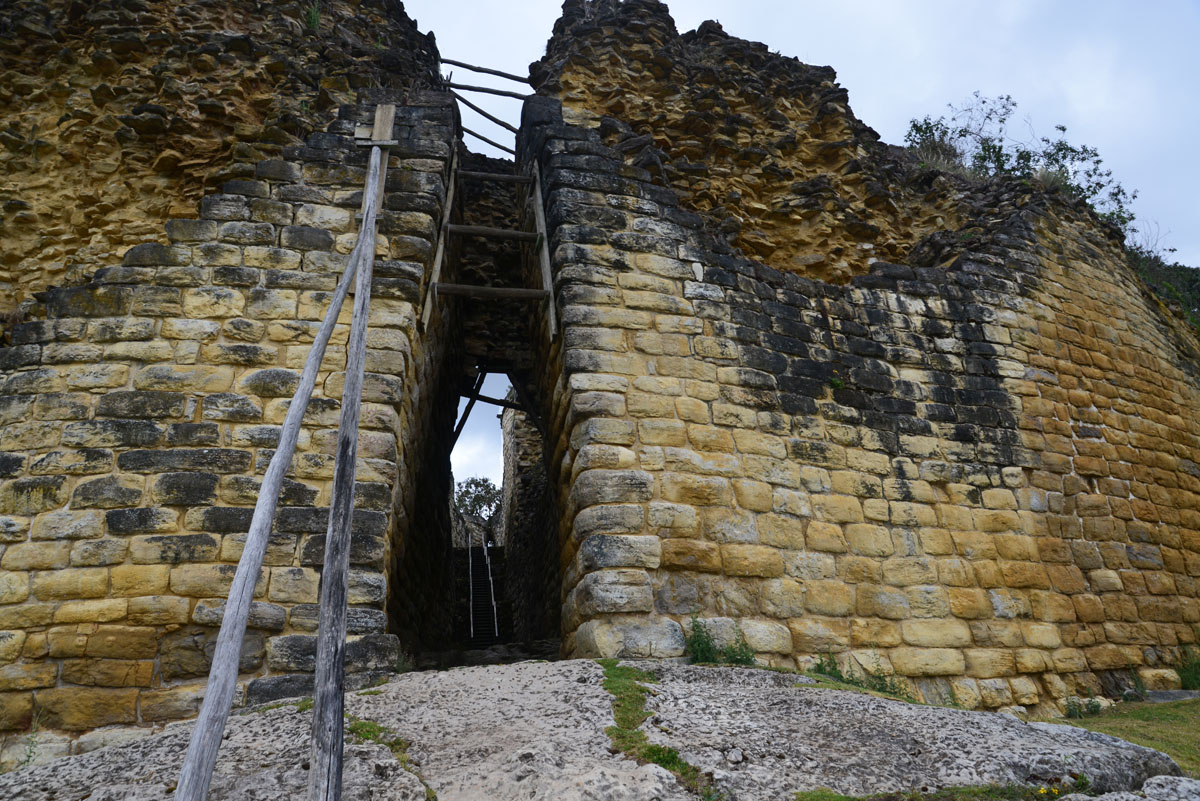
The now impassable main entrance. Because of eathquakes the arch started to collapse and is now closed to the public.
Kuelap
 |
The now impassable main entrance. Because of eathquakes the arch started to collapse and is now closed to the public. |
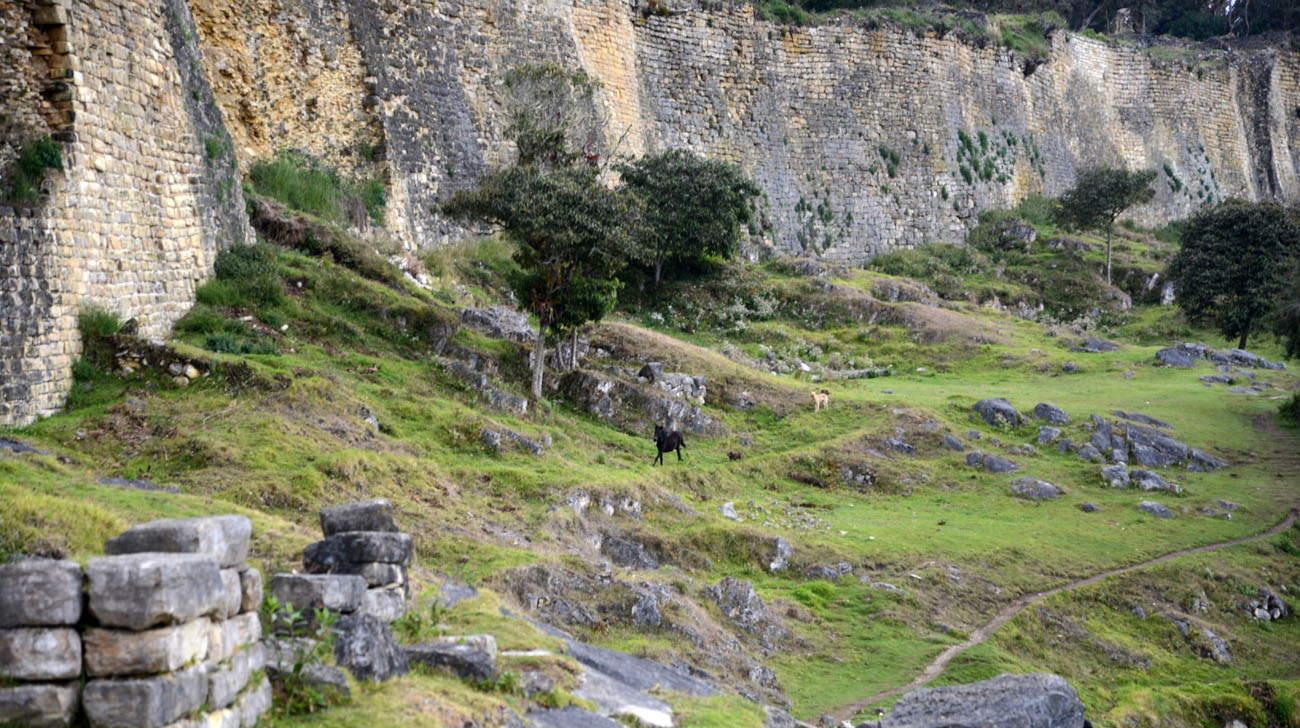 |
Fortunately, there is another entrance at the north end of the fortress, which can still be used. On the way there I happen to see these two playful horses. |
|
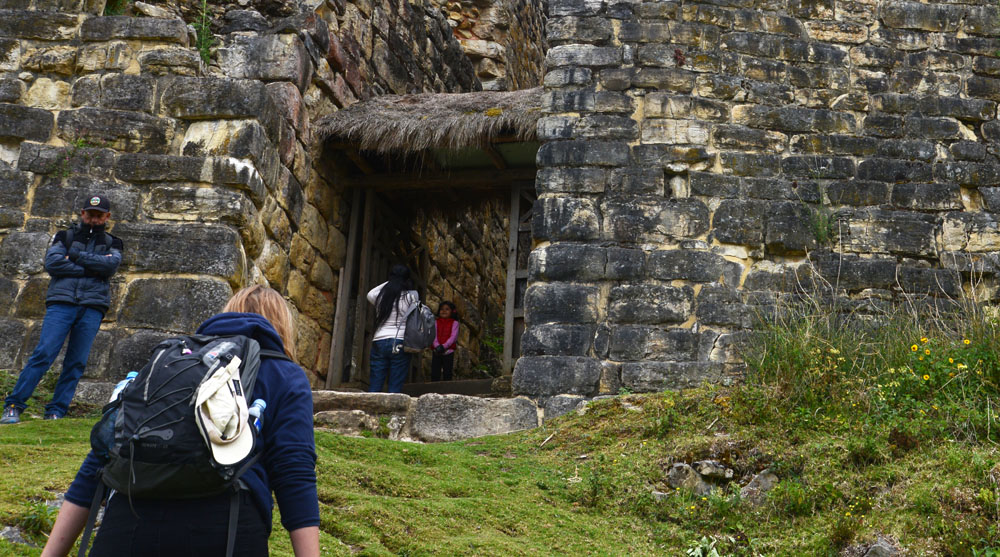 |
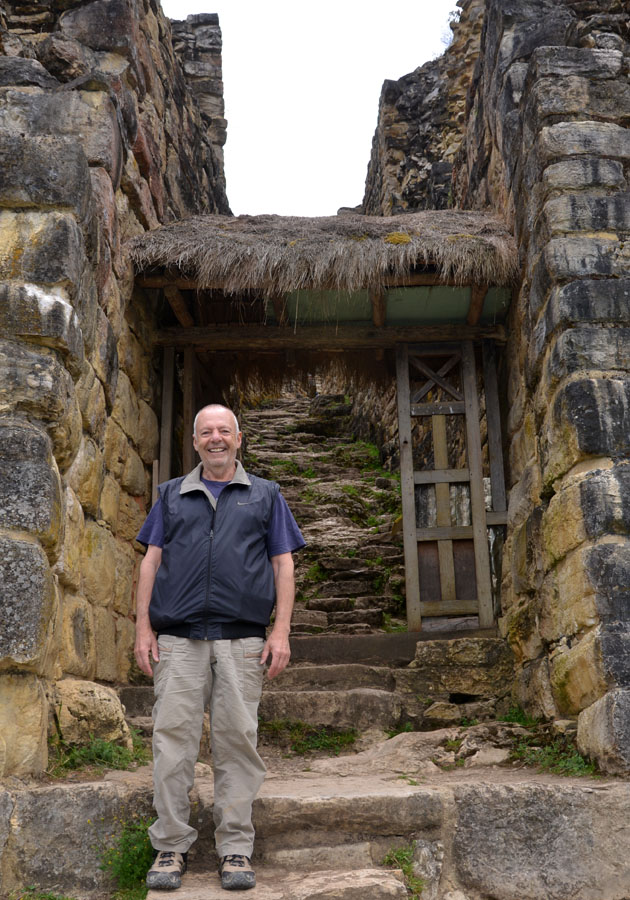 |
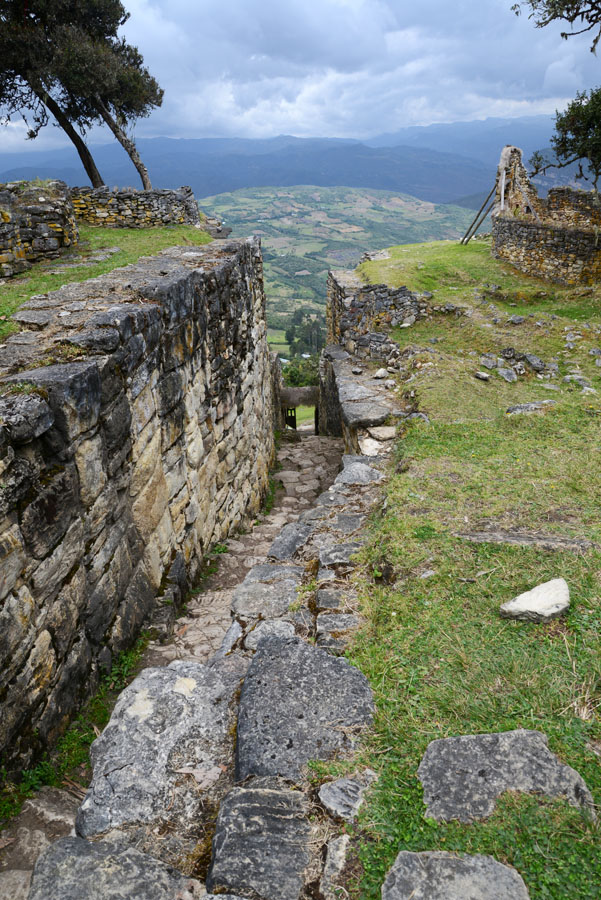 |
 |
This is the first level, and there were round foundations and wall remnants everywhere. We did not linger here for long but took a narrow passage to the next level |
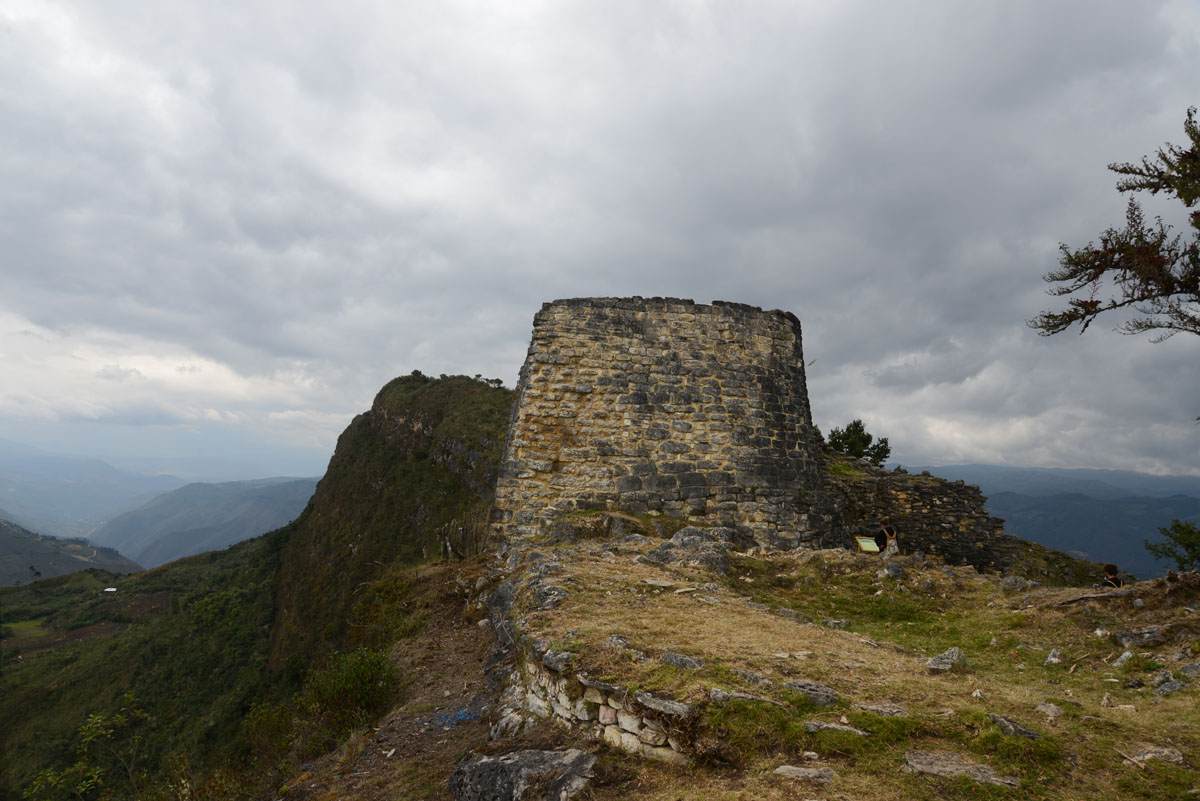 |
Once at the top we walked to the northern end of the fortress and the northern watchtower. |
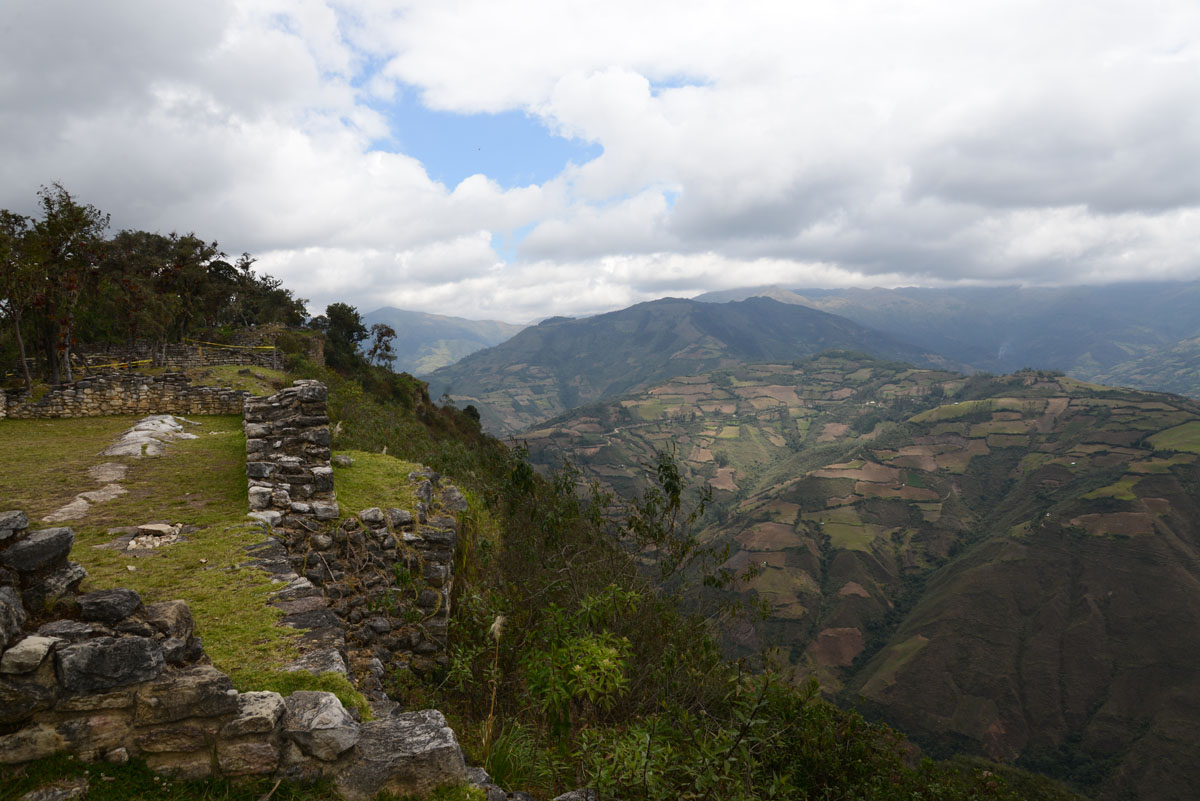 |
Turning back southward, and looking along the east wall shows how difficult it would be to attack from that direction. And you ask, but what's with the rectangular wall? That's not Chachapoyan, that's Inca style. Indeed. The Inca in their final push to get this fortress out of the way, came with 20000 warriors and laid siege to it. Immediately exposing its one weakness. A question, since I had visited Masada, the mountain fortress in Israel, which did have enormous cisterns, I immediately asked of my guide: Where are the cisterns? And the answer was, that was the fatal flaw of this structure. No water. There were no significant cisterns. The inhabitants ended up surrendering to the Incas and they in turn inhabited Kuelap for some time, built a couple of structures, the walls of one of them you see here, and then abandonded it. |
 |
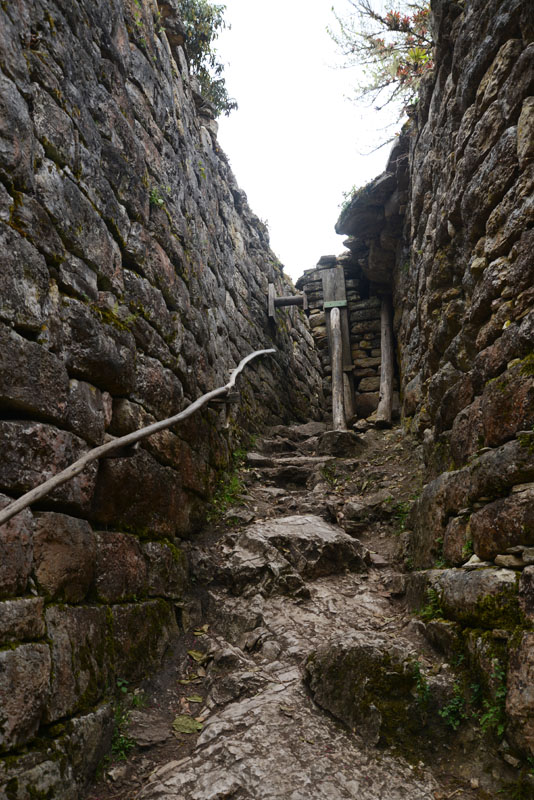 |
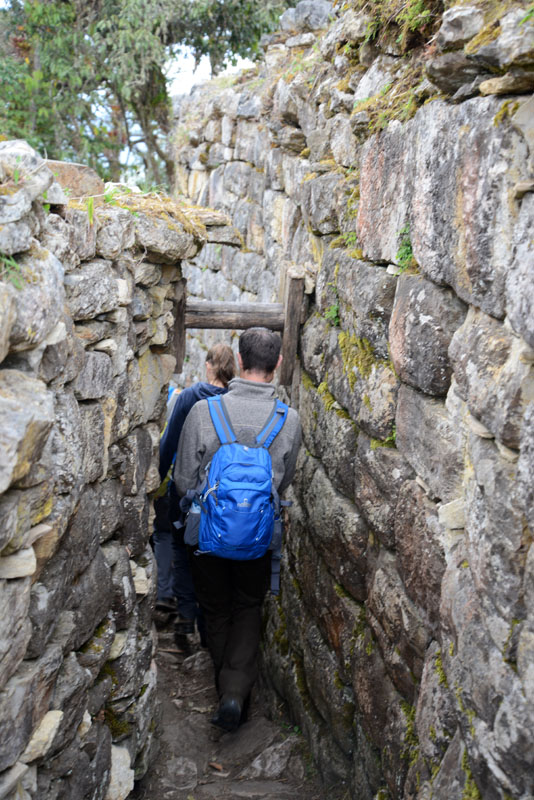 |
| After briefly exploring the smaller, upper level, | we descended again down to the main level |
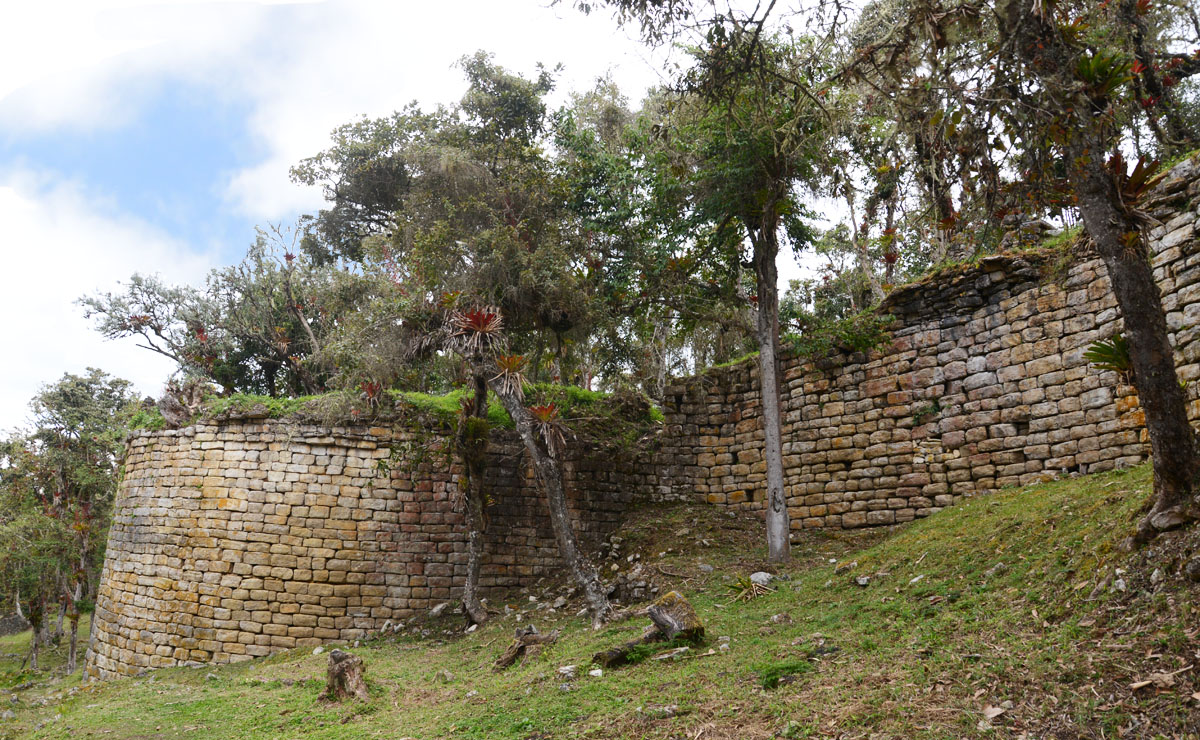 |
 |
Once back on the main level, our guide pointed out some holes in a wall and, as I had once done in Egypt, I stuck my camera lens into it, stabilized it, and then let it have a look. While in Egypt, I was rewarded with some unexpected and beautiful wall paintings, here I discovered some human remains. |
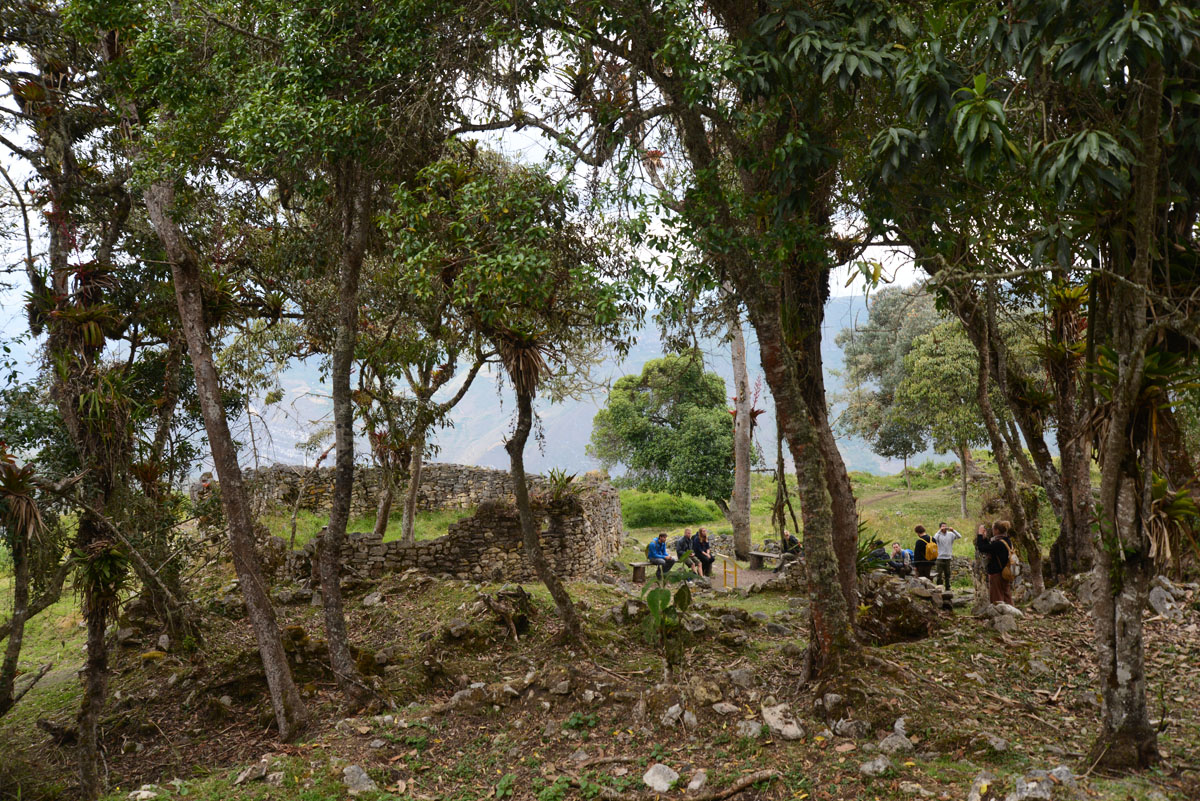 |
This gives you an idea of how large some of these round buildings were. |
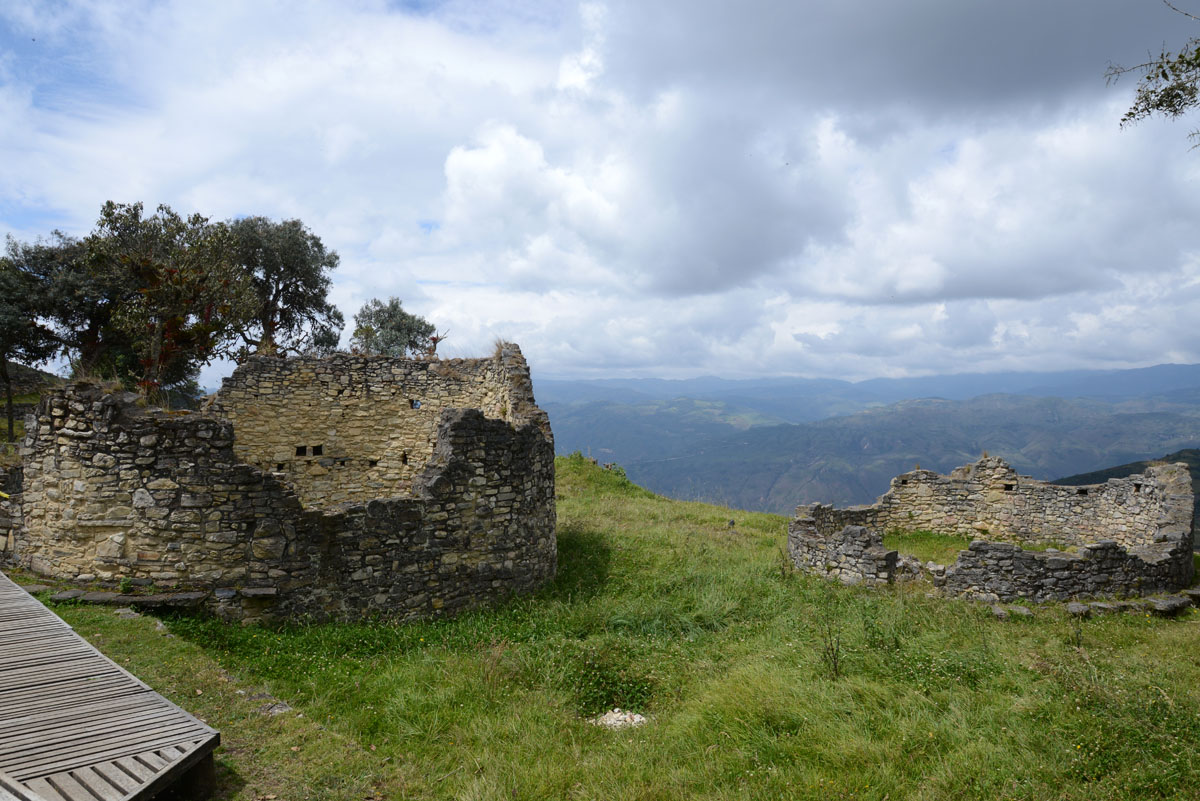 |